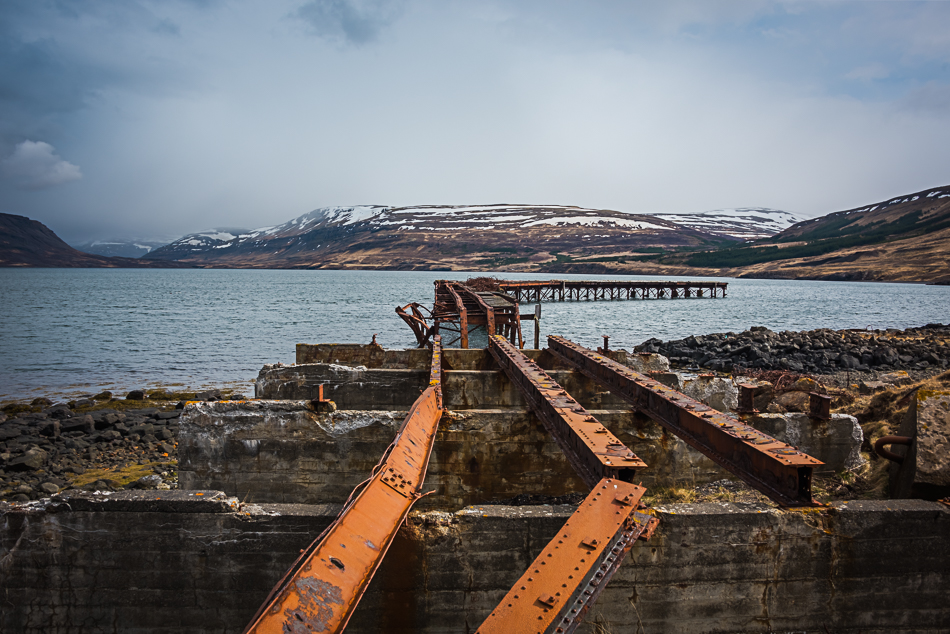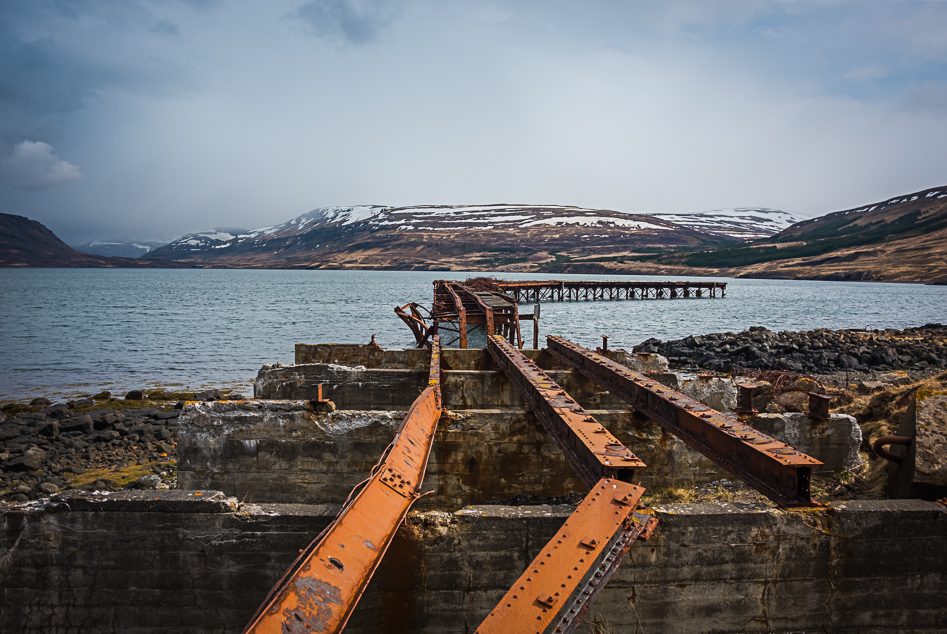
On a small peninsula jutting into Hvalfjordur lies the remains of a US and British WWII naval installation. Not much actually survives, just the twisted remains of a steel pier and a few concrete buildings, but this was a fairly sizeable installation (along with the British based in Hvammsvik), dedicated to building and maintaining the anti-U-boat nets and mines protecting the merchant and military convoys along the coast of Iceland.
Hvitanes, on the small point of land, was the British base, with 250 buildings and a veritable town including a cinema, workshop, housing, lighting, heating, and everything a small town needs. The pier was built to load and offload the nets and equipment for the barriers, and in some cases for lading ships, although they normally were anchored across the fjord.
The nearby bay (Hvammsvik) is protected, and the American base was located there. A floating dry-dock, ship repair workshops, ammo storage and the like were located there. Warships anchored in the fjord, waiting to escort merchant and military ships on the routes to Russian ports. German aircraft often patrolled the shores of Iceland; 4 of them were shot down by American pilots during the war.
I did not know this, but apparently, Iceland was invaded by the British in order to keep the neutral country out of the hands of the Germans. Its location provided a perfect base for submarines, and it was considered a huge risk for the tiny island to defend itself. Britain offered to aide Iceland to protect its shores, but was rebuffed. On May 10, 1940, the British navy took over with barely a murmur from anyone, in a Royal Navy operation codenamed Operation Fork. They landed, took control of communications and transport, arrested German citizens, and basically settled in without any resistance from the Icelanders. It remained occupied until the end of the war.
The occupation of Iceland was an event that sharply divided the Icelandic peoples, and the presence of American, Canadian, and British soldiers is seen by some as a huge economic boom that set Iceland on a path of prosperity, others see it as an unwarranted invasion of a neutral country and abuse of its people. I had no idea that any of that had occurred. The site Icelandic Roots has a detailed history of the occupation.
The site today has very little evidence of any such occupation, other than a few concrete buildings looking out over the fjords. It is quiet, and it seems very few people ever take the little gravel drive down to the edge of the peninsula.
Only a short drive away is the lovely little natural hotpot Hvalfjarðarlaug, a stone and concrete circle heated by a natural spring, and the start of the hike to Glymur is just to the east.




One thought on “Hvitanes”